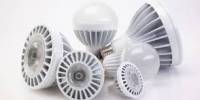Buildings contribute significantly to global warming, not only via their activities but also through the materials used in their construction. Truss structures, which are crisscross arrays of diagonal struts used in everything from radio towers to enormous building support beams, are often built of steel, wood, or a combination of both.
However, there has been little quantitative research on how to choose the correct materials to reduce these constructions’ contribution to global warming. Trusses are a very robust, well-liked, and cost-effective alternative for building a variety of structures. An appropriate truss type should be chosen for the design and construction to maximize the structure’s efficiency (which is generally assessed in the amount of material utilized or labor).
The fuel needed in the material’s manufacturing (for example, mining and smelting steel or chopping and processing trees) as well as in transporting the materials to a job site is referred to as “embodied carbon.” It also comprises the tools utilized during the construction process.
A truss is a triangulated system of interconnected straight structural members. The most prevalent application of trusses is in buildings, where they provide support for roofs, floors, and interior loads such as services and suspended ceilings. The main reasons for using trusses are:
- Long span
- Lightweight
- Reduced deflection (compared to plain members)
- Opportunity to support considerable loads
Now, MIT researchers have conducted a thorough investigation and developed a set of computational tools to help architects and engineers design truss systems that have the lowest embodied carbon while keeping all of the attributes required for a specific building application.
In general, wood is far better than steel in terms of embedded carbon, so “especially if you have a structure that doesn’t have any tension, then you should definitely only use timber” in order to minimize emissions. One tradeoff is that “the weight of the structure is going to be bigger than it would be with steel.”
Josephine Carstensen
While wood has a smaller carbon footprint in general, they claim that employing steel in places where its qualities can deliver the most value can provide an optimum result.
Graduate student Ernest Ching and MIT assistant professor of civil and environmental engineering Josephine Carstensen present their findings in a study published in the journal Engineering Structures.
“Construction is a huge greenhouse gas emitter that has kind of been flying under the radar for the past decades,” says Carstensen.
However, in recent years, architects have begun to focus more on ways to reduce not only the running energy connected with building use, but also the significant carbon related with the construction itself. This is where the new research comes in.
Trusses are employed in a wide range of structures, primarily when very large spans are required, such as airport terminals, airplane hangers, sports stadium roofs, auditoriums, and other recreational structures. Trusses are also employed to handle enormous loads and as transfer structures on occasion.
She claims that switching materials or modifying the structure are the two main approaches for lowering carbon emissions related with truss structures. However, she claims that there has been “very little effort” on tools to assist designers in determining emissions-reducing techniques for a given setting.
The new system employs a technique known as topology optimization, which allows for the input of basic parameters such as the amount of load to be supported and the structure’s dimensions, and can then be used to generate designs that are optimized for various characteristics such as weight, cost, or, in this case, global warming impact.
When it comes to compression forces, wood outperforms steel, but not when it comes to tension forces, which pull the structure apart.
Carstensen says that in general, wood is far better than steel in terms of embedded carbon, so “especially if you have a structure that doesn’t have any tension, then you should definitely only use timber” in order to minimize emissions. One tradeoff is that “the weight of the structure is going to be bigger than it would be with steel,” she says.
The tools they created, which served as the foundation for Ching’s master’s thesis, can be used at many stages of the design process, from the early planning stages through the final stages.
The researchers developed a proposal for reengineering multiple trusses using these optimization tools as an exercise, demonstrating that considerable reductions in embodied greenhouse gas emissions may be accomplished without sacrificing performance.
While they have demonstrated gains of at least 10%, she claims that such figures are “not precisely apples to apples” and that genuine savings might be two to three times that.
“It’s about choosing materials more smartly,” she says, for the specifics of a given application. Often in existing buildings “, you will have timber where there’s compression, and where that makes sense, and then it will have really skinny steel members, in tension, where that makes sense. And that’s also what we see in our design solutions that are suggested, but perhaps we can see it even more clearly.”
However, she claims that the tools are not yet ready for commercial usage since they need a user interface. Carstensen sees a trend toward greater usage of wood in large construction projects, which has the potential to reduce global carbon emissions significantly.
The ratio of span to truss depth should be between 10 and 15 for optimal structural performance. The external geometry of the structure is determined by its architectural design, which also dictates the slope(s) applied to the top chord of the truss.
The planned use of the internal space can lead to either a horizontal bottom chord (for example, where conveyors must be hung beneath the chord) or an inclined bottom chord (to provide the most room).
The building industry is really interested in mass timber constructions, and this fits right in there. As a result, the goal is that this will penetrate the construction industry and make a dent in the industry’s huge contribution to greenhouse gas emissions.
















